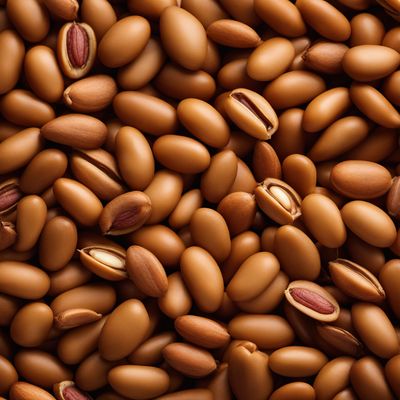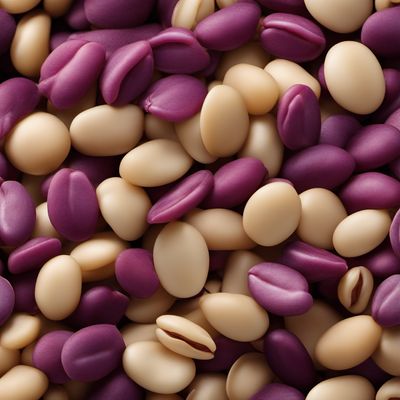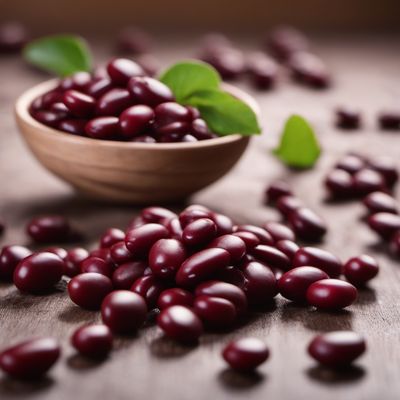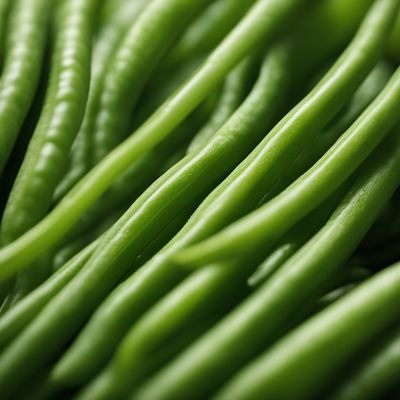
Ingredient
Runner beans (without pods)
The Vibrant Green Delight: Unveiling the World of Runner Beans
Runner beans are long, slender, and bright green in color. They have a crisp and crunchy texture, with a slightly sweet and grassy taste. These beans are often enjoyed without their fibrous pods, which are removed before cooking or eating.
Origins and history
Runner beans are native to Central and South America, where they have been cultivated for thousands of years. They were introduced to Europe by Spanish explorers in the 16th century and quickly gained popularity. Today, runner beans are widely cultivated and enjoyed in various cuisines around the world.
Nutritional information
Runner beans are low in calories and fat, while being rich in fiber, vitamins A and C, and minerals such as potassium and iron. They also contain antioxidants that contribute to overall health and well-being.
Allergens
Runner beans do not typically pose allergenic risks. However, individuals with legume allergies should exercise caution when consuming them.
How to select
When selecting runner beans, look for beans that are firm, bright green, and free from blemishes or discoloration. The beans should snap easily when bent, indicating freshness. Avoid beans that are limp or have visible signs of damage.
Storage recommendations
To maintain the freshness of runner beans, store them in a perforated plastic bag or airtight container in the refrigerator. They can be kept for up to a week, but it is best to consume them as soon as possible for optimal taste and texture.
How to produce
Runner beans can be easily grown in home gardens or containers. They require a sunny location, well-drained soil, and regular watering. Plant the seeds or seedlings in spring, and provide support for the vines to climb as they grow. Harvest the beans when they are young and tender for the best flavor and texture.
Preparation tips
Runner beans can be steamed, boiled, stir-fried, or blanched to preserve their vibrant color and crisp texture. They can be enjoyed as a side dish, added to salads, stir-fries, soups, stews, or even pickled for a tangy twist. Remove the fibrous strings before cooking or eating for a more enjoyable dining experience.
Culinary uses
Runner beans are commonly used in salads, stir-fries, soups, stews, and side dishes. They add a vibrant green color and a fresh crunch to various cuisines, including Asian, Mediterranean, and American.
Availability
Runner beans are widely available in grocery stores, supermarkets, and farmers markets. They are cultivated in many regions around the world, including North and South America, Europe, and Asia.
More ingredients from this category » Browse all

Ervils (without pods)
Delicate Green Gems

Jack beans (without pods)
The Versatile Legume: Unveiling the Wonders of Jack Beans

Rice beans (without pods)
The Versatile Rice Bean

Lablab beans (without pods)
The Protein Powerhouse

Black gram (fresh seeds)
The Nutritional Powerhouse: Fresh Black Gram Seeds

Stink beans (without pods)
The Pungent Delicacy: Stink Beans Unleashed

Monantha vetches (without pods)
The Versatile Monantha Vetches

Azuki beans (without pods)
The Versatile Azuki Beans

Vetches (without pods)
The Versatile Vetch

Yardlong beans (without pods)
The Versatile Legume

Borlotti or other common beans (without pods)
The Versatile Legume: Borlotti Beans

Guar beans (without pods)
Versatile Legume Powerhouse
